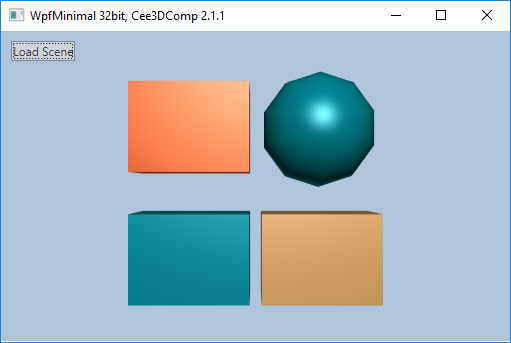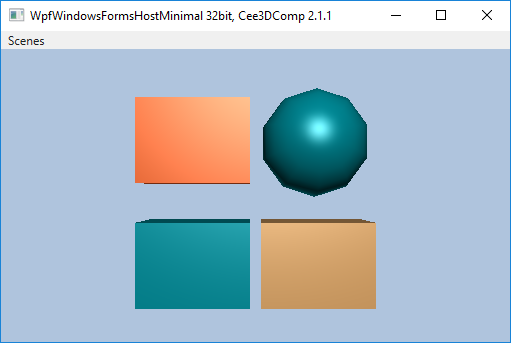CEETRON Envision with WPF
CEETRON Envision has (on Windows) a built-in support for Win32 apps. This is implemented by the
Win Component.
The same component is used for Win32, MFC, Windows Forms and WPF.
See the topic C# Users: Features and Differences for tips on how to use CEETRON Envision and this documentation with C#/.NET
Creating a Viewer
All CEETRON Envision apps needs a viewer in order to visualize the 3D data. WPF uses the
ViewerWin32 found in the Win Component.
For integration towards WPF, you create your own Windows Forms UserControl and implement paint, mouse and other event handling towards CEETRON Envision. The UserControl is inserted into your WPF page using the WindowsFormsHost class. A functional viewer with full code is provided in the WpfWindowsFormsHostMinimal example.
Due to limitations in WPF (airspace), you cannot draw other controls on top of the OpenGL rendering done in the CEETRON Envision View class. If you need to have other controls on top of the rendering, you can use a WPF UserControl with offscreen rendering and work around this limitation. See the WpfMinimal example for how to do this. This approach will have a slight performance penalty.
Example Programs
All .NET examples are provided with a .cproj for use in Visual Studio.
WPF Minimal
Location: Examples/WinForms/WpfMinimal |
Note
We recommend to use WindowsFormsHost instead of a WPF UserControl, for performance reasons.
WPF WindowsFormsHost Minimal
Location: Examples/WinForms/WpfWindowsFormsHostMinimal |


